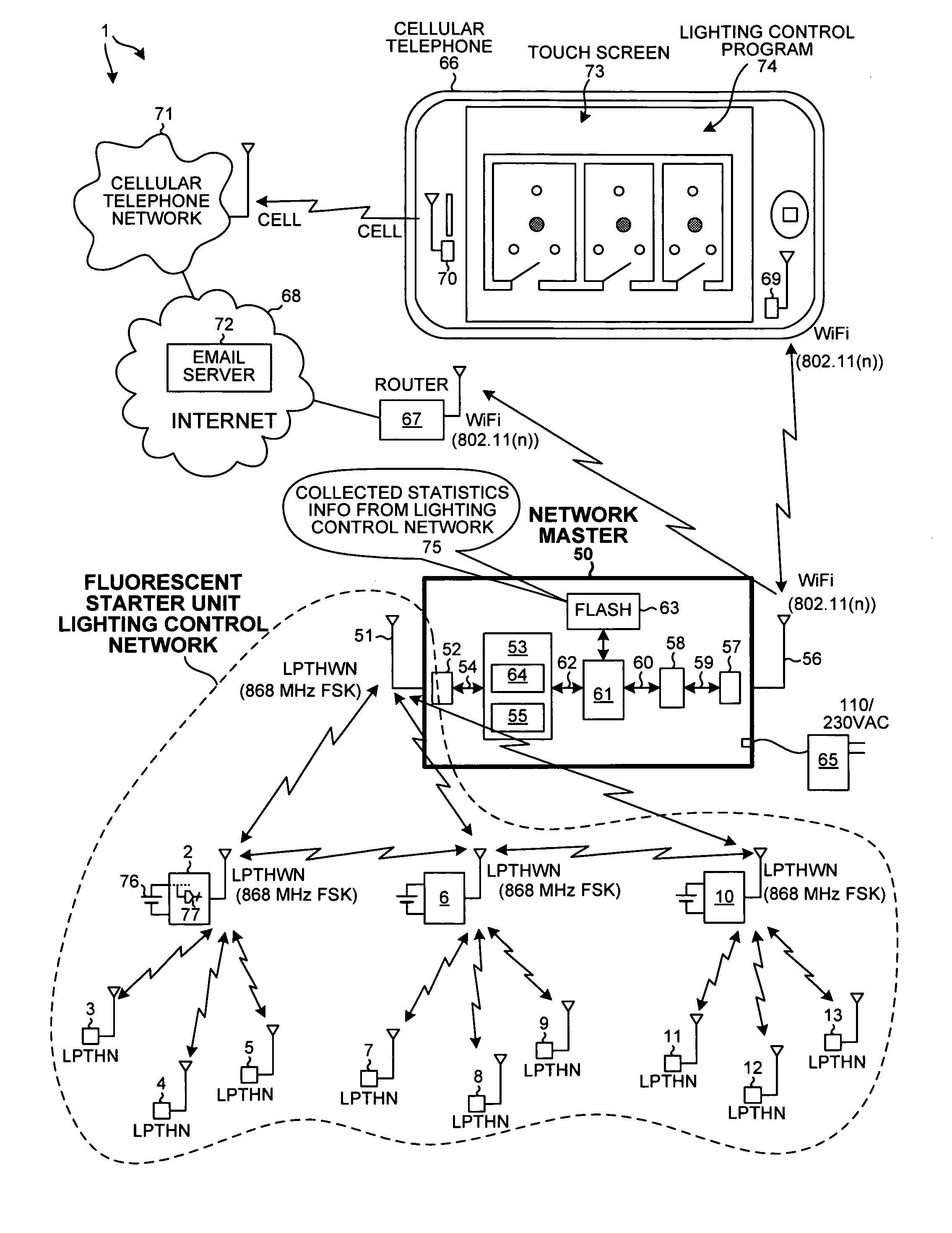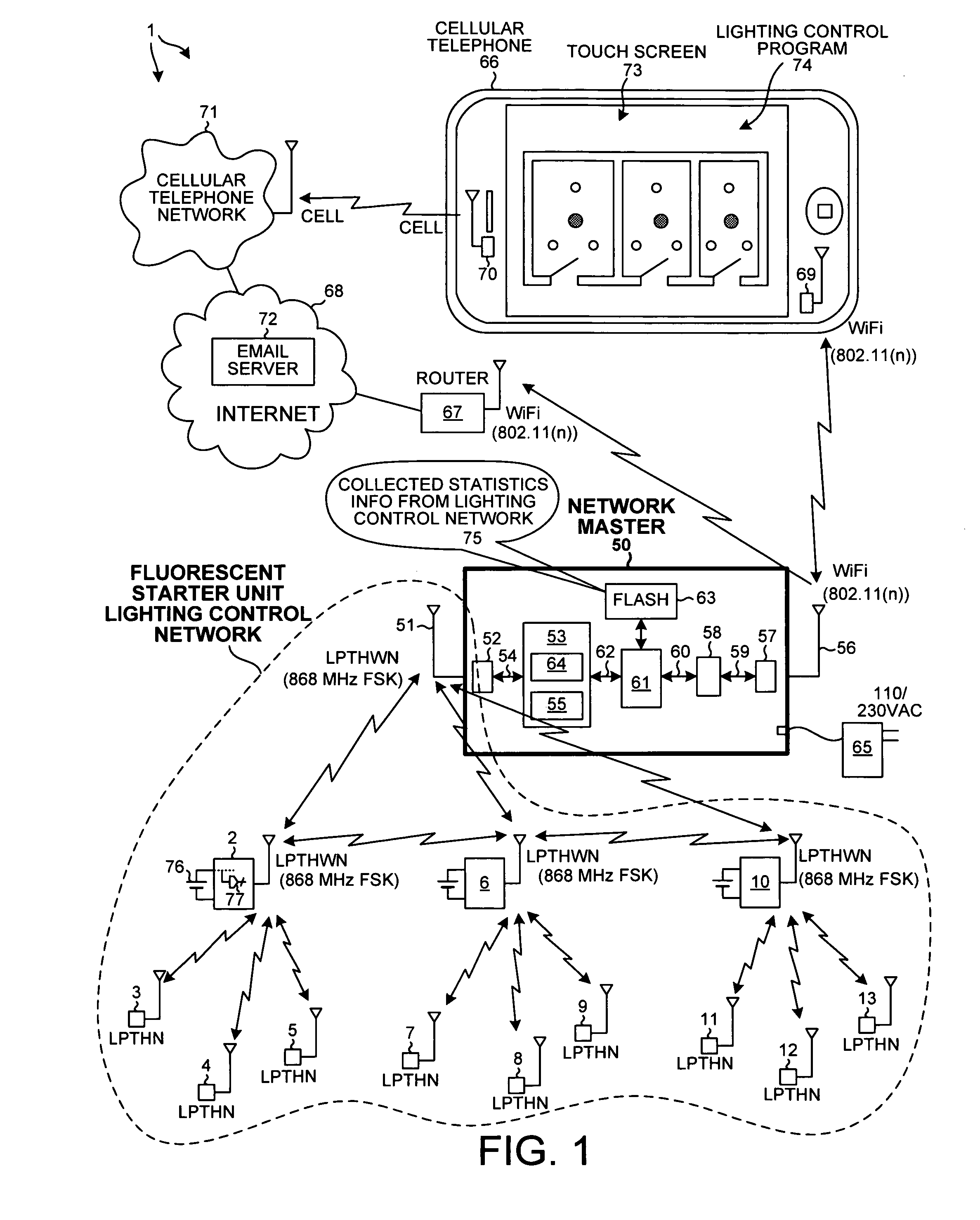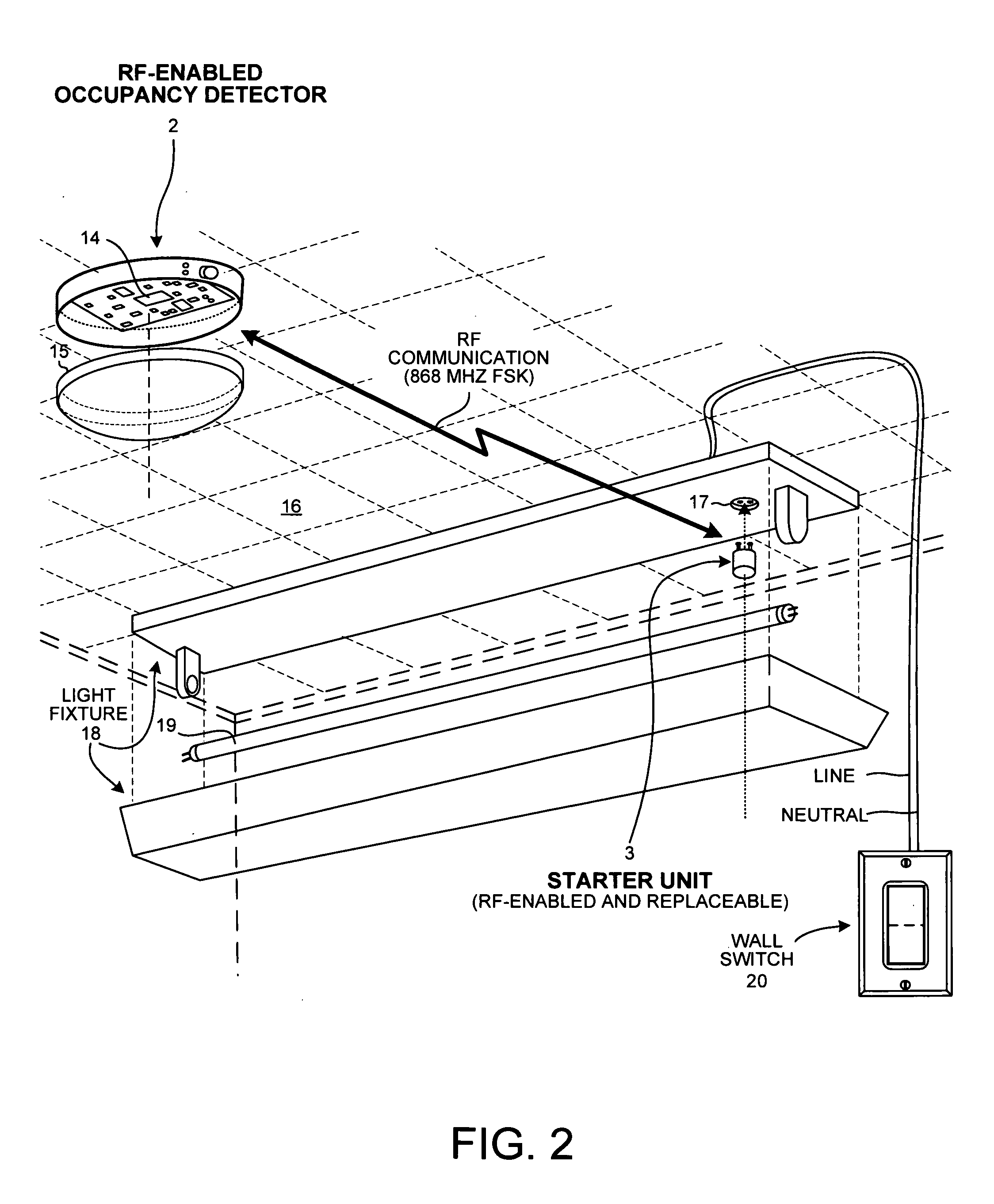Network master for wireless fluorescent lamp lighting control networks
- Summary
- Abstract
- Description
- Claims
- Application Information
AI Technical Summary
Benefits of technology
Problems solved by technology
Method used
Image
Examples
Embodiment Construction
[0021]Reference will now be made in detail to background examples and some embodiments of the invention, examples of which are illustrated in the accompanying drawings.
[0022]FIG. 1 is a diagram of a system 1 in accordance with one novel aspect. A first low-power time-hopping wireless network (LPTHWN) includes a first battery-powered Passive InfraRed (PIR) occupancy detector 2 and a first plurality of wireless fluorescent lamp starter units 3-5. A second low-power time-hopping wireless network includes a second battery-powered PIR occupancy detector 6 and a second plurality of wireless fluorescent lamp starter units 7-9. A third low-power time-hopping wireless network includes a third battery-powered PIR occupancy detector 10 and a third plurality of fluorescent lamp starter units 11-13. Although each network includes only three fluorescent lamp starter units in the system pictured, a network may include multiple occupancy detectors and many more starter units. In each of the network...
PUM
 Login to View More
Login to View More Abstract
Description
Claims
Application Information
 Login to View More
Login to View More - Generate Ideas
- Intellectual Property
- Life Sciences
- Materials
- Tech Scout
- Unparalleled Data Quality
- Higher Quality Content
- 60% Fewer Hallucinations
Browse by: Latest US Patents, China's latest patents, Technical Efficacy Thesaurus, Application Domain, Technology Topic, Popular Technical Reports.
© 2025 PatSnap. All rights reserved.Legal|Privacy policy|Modern Slavery Act Transparency Statement|Sitemap|About US| Contact US: help@patsnap.com



